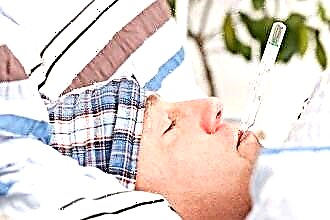 The hearing organ can function normally only if the pressure in the tympanic cavity is maintained at a certain level. Therefore, situations in which it changes, such as diving or climbing mountains, can lead to the development of inflammation in the middle ear. However, this mechanism of development of otitis media is extremely rare.
The hearing organ can function normally only if the pressure in the tympanic cavity is maintained at a certain level. Therefore, situations in which it changes, such as diving or climbing mountains, can lead to the development of inflammation in the middle ear. However, this mechanism of development of otitis media is extremely rare.
In the overwhelming majority of cases, otitis media is a complication of various pathologies, accompanied by the formation of mucus in the nasopharynx and throwing it into the middle ear cavity.
The pathological effect is carried out in two ways. On the one hand, the auditory tube narrowed as a result of edema and mucus formation prevents the pressure in the tympanic cavity from being maintained at a certain level. This leads to a decrease in pressure in the middle ear, and the development of a pathological process in it.
On the other hand, inflammation of the nasopharynx is characterized by the presence of mucus and pathogens in the auditory tube. During blowing your nose or sleeping, this content is thrown into the tympanic cavity, which also contributes to the development of the disease. This is how catarrhal otitis media of the middle ear develops.
With timely correct treatment, carrying out measures aimed at preventing the throwing of mucus and pathogens from the nasal cavity into the middle ear, it is possible to improve the situation and recover. Otherwise, thickening of the exudate is noted. Within 2-3 days, and in some cases, even several hours, the transformation of the disease into acute purulent otitis media is possible, which is divided into several stages, depending on the condition of the tympanic membrane.
Causes
The main role in the development of otitis media is played by the patency of the auditory tube.
In children, the development of this pathological process is noted much more often, which is due to a number of concomitant factors. The causes of otitis media in children are due to the following:
- anatomical features of the structure of the ear;
- the high incidence of respiratory diseases in children compared with the adult population;
- prolonged finding of children during sleep in a horizontal position;
- the presence of concomitant pathology of the ENT organs, which negatively affects the provision of the drainage function of the auditory tube;
- frequent crying of children, which results in an increased amount of mucus in the nasopharynx;
- the inability of children to carry out competent blowing out.
Comorbidities

Since the increased production of mucus, edema is most typical for diseases such as ARVI, including influenza, childhood infectious diseases, sinusitis, it is precisely the complication of these pathological conditions that otitis media is. The condition can be aggravated in the presence of adenoiditis, that is, overgrowth of the pharyngeal tonsil.
The enlarged adenoid tissue compresses the lumen of the auditory tube from the outside, contributing to the stagnation of mucus in it.
This circumstance further impairs the drainage function of the Eustachian tube and disrupts the functioning of the middle ear. Clinically, this is manifested by the presence of ear pain and hearing loss.
It is this pathology that the otolaryngologist examines when re-visiting him with frequent otitis media. Often, surgery to remove them, adenotomy, contributes to a significant improvement in the situation. Indeed, in this case, one of the main reasons for the development of frequent otitis media in children is excluded.
However, this operation also has significant drawbacks. The fact is that adenoids are composed of lymphoid tissue involved in immune processes. Removing them helps to improve the situation only for a certain time. Subsequently, the tissue begins to grow again, causing a relapse. In addition, surgery performed at this age can cause emotional trauma for a long time. In this regard, otolaryngologists have not yet developed a unified tactics on this issue.
Treatment of adenoiditis begins with more gentle conservative techniques. Recently, to improve the situation and reduce adenoids, immunomodulatory treatment is carried out, as well as a local effect on the nasopharyngeal mucosa with ultrasound, various solutions. The purpose of this effect is to reduce the volume of the glandular tissue of the adenoids without impairing their functionality.
The role of anatomy
The causes of otitis media in children also lie in the anatomical features of the auditory tube. In children of certain regions up to 5 years old, it is much shorter than in older age. This is a prerequisite for easier penetration of microbes through it from the nasopharynx into the middle ear cavity.
Thus, a runny nose and nasal congestion are not, by themselves, a cause for concern. In order for otitis media to develop, the influence of additional factors is necessary, such as an individual characteristic from the side ENT - organs, genetic predisposition. Otherwise, a complication of ARVI may be pneumonia, bronchitis or other pathology.
ENT - organs, genetic predisposition. Otherwise, a complication of ARVI may be pneumonia, bronchitis or other pathology.
The causes of frequent otitis media in a child are due precisely to the anatomical features of the Eustachian tube.
In addition to the fact that it is shorter than in other children, it is located more straight, at a lower angle, which makes it easier for the contents in the form of mucus and pathogenic microorganisms to be thrown into it. It is the genetic predisposition that explains the fact that some nationalities do not at all face such a problem as ear inflammation.
The causes of otitis media in children also lie in insufficient immunity. In this regard, the importance of breastfeeding increases to increase the body's defenses. Premature babies who are bottle-fed with concomitant pathology are more susceptible to the development of any complications of respiratory diseases, including otitis media. Consequently, the role of preventive measures aimed at increasing immunity is great.



